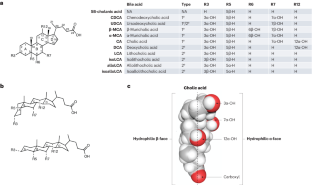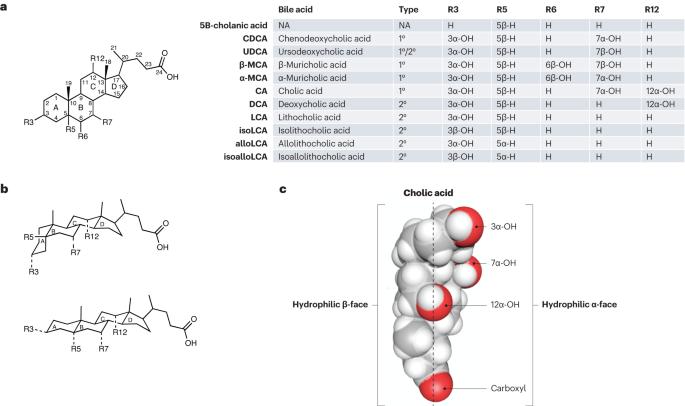Another renaissance for bile acid gastrointestinal microbiology
IF 45.9
1区 医学
Q1 GASTROENTEROLOGY & HEPATOLOGY
引用次数: 0
Abstract
The field of bile acid microbiology in the gastrointestinal tract is going through a current rebirth after a peak of activity in the late 1970s and early 1980s. This renewed activity is a result of many factors, including the discovery near the turn of the century that bile acids are potent signalling molecules and technological advances in next-generation sequencing, computation, culturomics, gnotobiology, and metabolomics. We describe the current state of the field with particular emphasis on questions that have remained unanswered for many decades in both bile acid synthesis by the host and metabolism by the gut microbiota. Current knowledge of established enzymatic pathways, including bile salt hydrolase, hydroxysteroid dehydrogenases involved in the oxidation and epimerization of bile acid hydroxy groups, the Hylemon–Bjӧrkhem pathway of bile acid C7-dehydroxylation, and the formation of secondary allo-bile acids, is described. We cover aspects of bile acid conjugation and esterification as well as evidence for bile acid C3-dehydroxylation and C12-dehydroxylation that are less well understood but potentially critical for our understanding of bile acid metabolism in the human gut. The physiological consequences of bile acid metabolism for human health, important caveats and cautionary notes on experimental design and interpretation of data reflecting bile acid metabolism are also explored. This Review discusses the role of the gut microbiome in the conversion of primary to secondary bile acids and critically evaluates biochemical pathways that are less well understood. Insights into how secondary bile acid derivatives influence host immune function are also described.


胆汁酸胃肠道微生物学的又一次复兴。
胃肠道胆汁酸微生物学领域在经历了 20 世纪 70 年代末和 80 年代初的研究高峰后,目前正处于复兴阶段。重新活跃的原因有很多,包括在世纪之交发现胆汁酸是强有力的信号分子,以及下一代测序、计算、培养组学、胆汁生物学和代谢组学方面的技术进步。我们介绍了这一领域的现状,特别强调了几十年来宿主合成胆汁酸和肠道微生物群代谢胆汁酸的问题。我们介绍了现有酶学途径的知识,包括胆盐水解酶、参与胆汁酸羟基氧化和二聚化的羟基类固醇脱氢酶、胆汁酸 C7-脱羟基的 Hylemon-Bjӧrkhem 途径以及次级别胆汁酸的形成。我们介绍了胆汁酸共轭和酯化的各个方面,以及胆汁酸 C3-脱羟基化和 C12-脱羟基化的证据,这些方面虽然不太清楚,但对我们了解人类肠道中的胆汁酸代谢可能至关重要。此外,还探讨了胆汁酸代谢对人体健康的生理影响、重要的注意事项以及实验设计和解释反映胆汁酸代谢的数据的注意事项。
本文章由计算机程序翻译,如有差异,请以英文原文为准。
求助全文
约1分钟内获得全文
求助全文
来源期刊
CiteScore
52.30
自引率
0.60%
发文量
147
审稿时长
6-12 weeks
期刊介绍:
Nature Reviews Gastroenterology & Hepatology aims to serve as the leading resource for Reviews and commentaries within the scientific and medical communities it caters to. The journal strives to maintain authority, accessibility, and clarity in its published articles, which are complemented by easily understandable figures, tables, and other display items. Dedicated to providing exceptional service to authors, referees, and readers, the editorial team works diligently to maximize the usefulness and impact of each publication.
The journal encompasses a wide range of content types, including Research Highlights, News & Views, Comments, Reviews, Perspectives, and Consensus Statements, all pertinent to gastroenterologists and hepatologists. With its broad scope, Nature Reviews Gastroenterology & Hepatology ensures that its articles reach a diverse audience, aiming for the widest possible dissemination of valuable information.
Nature Reviews Gastroenterology & Hepatology is part of the Nature Reviews portfolio of journals.

 求助内容:
求助内容: 应助结果提醒方式:
应助结果提醒方式:


